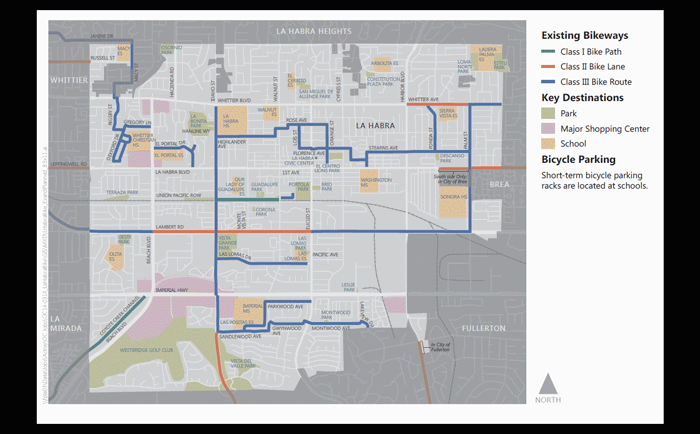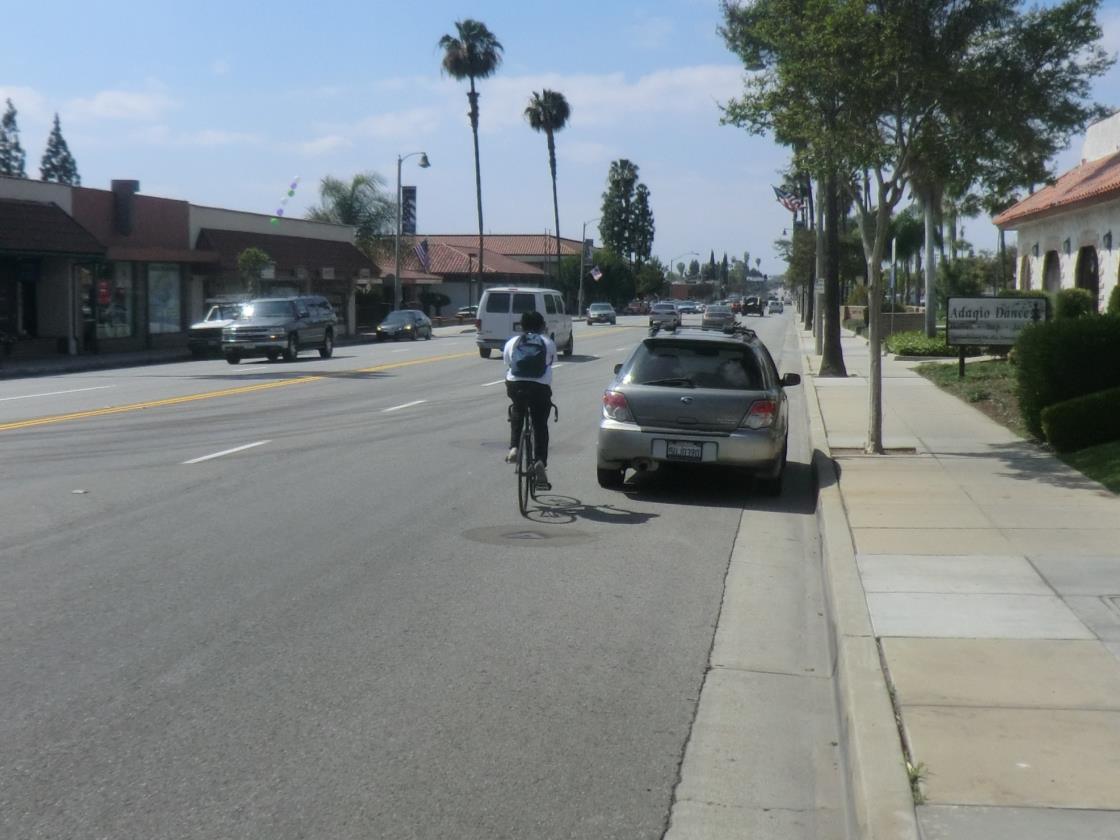The city of La Habra has been going through major planning initiatives aimed at bicyclists and pedestrians in the past few years. In September 2017, the city passed its first Bikeway Master Plan, and this year it is looking to pass its first Complete Streets Master Plan. In addition, the city is working on a systematic safety analysis report to catalog and analyze all pedestrian collisions in the city, planning to use the data to reduce injuries and deaths to zero.
All this is happening in an auto-centric city of more than 61,000 people, about the same population as Santa Cruz, with a land area of about 7.3 square miles. La Habra sits at the northwest border of Orange County, neighbor to Los Angeles County and Whittier, and relies on connections to major freeways like state Route 60 and Interstate 5. According to the U.S. Census's American Community Survey, roughly ninety percent of residents commute to work by car.
During outreach for the Complete Streets Master Plan, staff realized that the learning curb for residents would be steep. The idea of complete streets and what constitutes bike infrastructure was new for many La Habra residents, said Michael Plotnik, the city's traffic manager, who led the creation of the Bikeway Master Plan and is leading the effort on the Complete Streets Master Plan. "A lot of people didn't know what it was."
Even so, the plan's outreach process provided an opportunity to educate residents on the concepts and find out from them what they needed to help them move through the city. La Habra staff and consultants from Steer Davies Gleave hosted a Walk Shop, wherein residents walked La Habra Boulevard together. They talked about why it isn't a "complete street" and how the master plan could help make it one. After the tour, Walk Shop participants, with their newly acquired knowledge, identified on maps the places that need work, and how best to remold the streets, said Plotnik.
"We showed them how to make their community more walkable, friendly, and open," Plotnik said.

What has come out so far is a "more comprehensive plan with more things to help improve health," Plotnik said. "They wanted more public spaces, [and] to close off public streets for events," he said. Plotnik added that he learned more about the rate of pedestrian collisions in the city and how staff can help reduce those. "This report includes the bikeways and walkways, how connected our city is, how easy it is to get to a bus or walk or bike. (And) it's mostly on the arterial."
The plan is expected to be up for adoption in September. It wouldn't have gotten very far without some of the groundwork laid by the city in 2014. That year, La Habra passed a resolution to participate in the Healthy Eating Active Living Cities (HEAL Cities) initiative, a statewide project of the League of California Cities and Public Health Advocates to improve cities. That same year, the city updated its General Plan, and in it called for the development of the Bikeway Master Plan.
These moves by the city got the attention of St. Jude Medical Center, which has been hosting a five-year, $5-million community benefits initiative to combat obesity. The Move More, Eat Healthy campaign has, according to Barry Ross, Vice President of the Healthy Communities program at St. Jude Medical Center, funded policy and advocacy work to improve the environment and promote healthy lifestyles and nutrition.
Other Orange County participants include Buena Park, Placentia, and Fullerton. In 2015, St. Jude awarded La Habra $120,000 to help it develop its Complete Streets Master Plan. It's an important recognition that the way cities design streets has an impact on their residents' health. And, said Ross, "this commitment. . . helped educate the city staff, policymakers, and residents that they play an important role in health."






